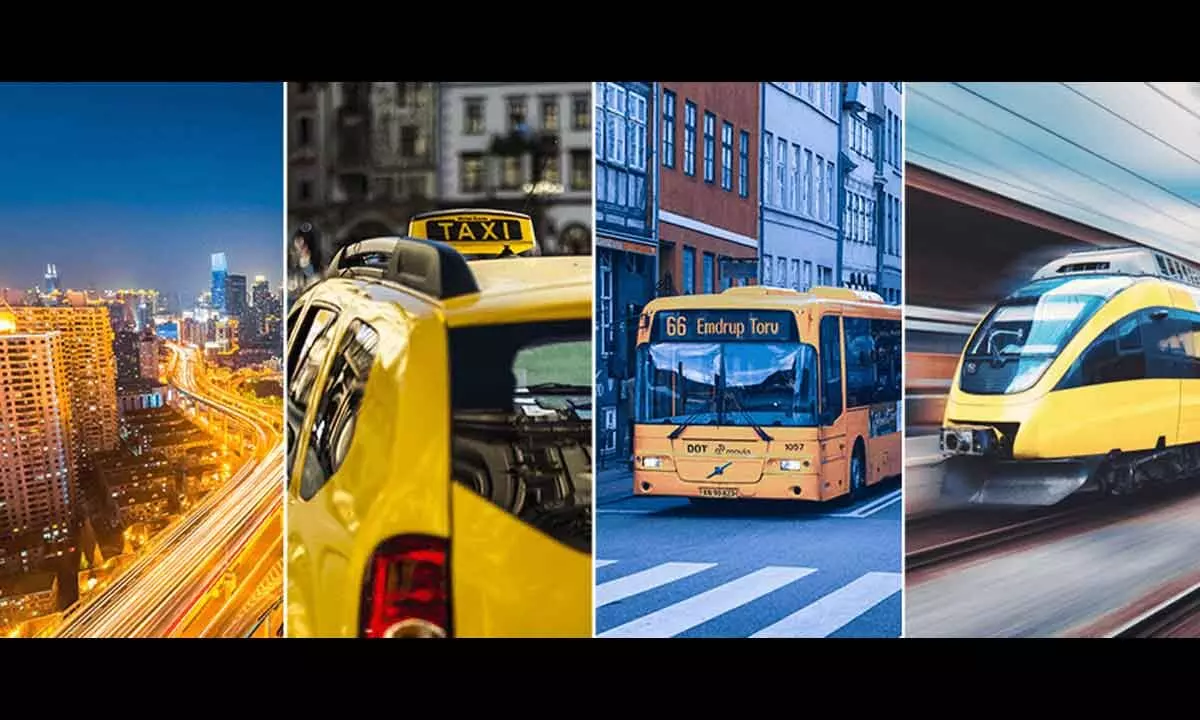Urban transportation to turn new leaf in 2030, points survey
image for illustrative purpose

Regardless of what the future brings - one thing will not change: People will continue to have the need to move from A to B and do so as quickly, as comfortably, as cheaply and as environmentally friendly as possible. Modern mobility makes the world seem smaller than ever before and this is what urban mobility could look like in 2030.
A wave of on-demand, shared and electric-powered urban transportation services will generate $660 billion in revenue globally by 2030, according to a new study by the Oliver Wyman Forum and Institute of Transportation Studies (ITS) at the University of California, Berkeley. Asia is by far the biggest market for ride-hailing and taxis, and accounts for 60% of the global total and 80% of the region’s total consumer spending. Its growth will accelerate from $103.7 billion in 2020 to $171.9 billion in 2025 and $230.0 billion by 2030. In India, rapidly growing urban population (590 mn by 2030) and zooming motorisation rate (400 % increase in 15 years) is making city commute unfriendly. Globally, commuters waste 1 bn+ hr every year, waiting in traffic. Road accidents claim over 4,000 lives every day around the world, while 20-50 mn are disabled or injured every year.
Every year 0.3 mn people die of air pollution caused by automobiles in India. A few major cities in India boast of 100 cars per 1,000 people – claiming public spaces, congesting roads, and reducing pedestrian safety, while in over 70% of the major cities, the disparity in the demand and supply of public transportation is expanding. At present, we have 230 buses for a population of one million, whereas the requirement is for 600 buses per million people. Clearly, we need to find a better answer to these problems.
In the next 15 years, we all should envision and aspire to build towns and cities where every mobile device connects to the infrastructure, peers and administration to make the commute from point A to B seamless; where people get transported by autonomous pods that are 100 % safe; where every vehicle is clean without any harmful emissions; where pedestrians get to access spacious corridors owing to fewer vehicles on road from carpooling, regulations in car sales and congestion management; where people breathe clean air and live in a noise-free environment; where people driving cars start adopting carpooling on a large scale and seamlessly switch to multiple modes of transportation; and where technology companies offer various mobility service models and shared services at affordable prices to citizens.
To make this a reality, we would need to invest our time and energy in strengthening the following key pillars – (a) clean transportation; (b) shared mobility; (c) autonomous vehicles; and (d) infrastructure that enables multi-modal transport.
Electric mobility in India is still at an early phase. The focus seems to be on the various types of EV technology. The Indian government has set an ambitious vision to achieve electric mobility by 2030 and is working on building an environment that is conducive to its growth. The move towards electric mobility with Battery Electrified Vehicles (BEV) is emerging as a key enabler. Cost-effective and non-polluting public transportation systems that support the ‘Smart Cities’ initiative and public health objectives are a necessity. Increased use of electric buses could address the dual objective of expanding access to public transportation, while mitigating rising vehicular pollution and congestion.

